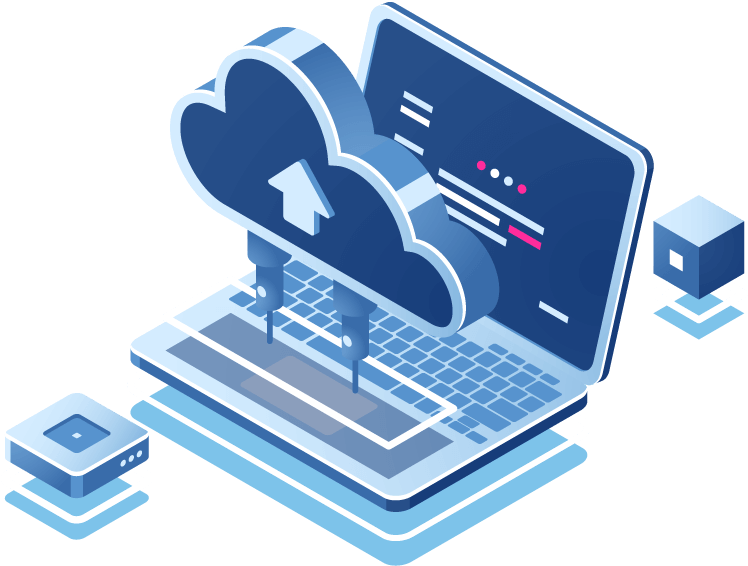
1) How much data do you need to move?
2) By when?
3) Will you provide access to the remaining data that wasn’t moved?
New technology can liberate, and it can also paralyze. When it comes to migrating to the cloud, there is a whole spectrum of places you could be in your journey. Many of our clients find themselves torn somewhere between exploring all the new benefits that come with the cloud to hesitancy knowing they’ll be committing a lion’s share of resources to migrate over in the coming year and they get stuck in making a decision about whether or not to migrate.
With advantages over on-prem environments that include better data security, more storage options, flexibility and scalability, the benefits of migrating to the cloud deserve to be considered. The responsiveness that becomes possible in a cloud environment can help businesses react more quickly to customer demands and position you out ahead of your competitors.
Being in the cloud also gives you unique insights into your data and can help you see how your customers are using your products in real time. This can result in better recommendations for them and give you a better understanding of how to create more valuable offerings in the future.
If you’re like most IT leaders, you must respond to pressure to be “in the cloud,” or at least have a good reason why you’re not yet there. These points will help guide you through wherever you are in the process.
You’ve Said “Yes” to the Cloud But Not Sure Where to Start
The pressure is mounting from business partners to virtualize your services and you can see the new value that suddenly becomes possible in this environment.
|
1. How much data do you actually need to move?
- Do you really need everything in your current location, or would it be time well spent thinking through what’s essential in the new environment?
2. By when?
- How long will it take to transfer all the data you say you need?
- Is your vendor prepared to help you move the data on your timeline?
- Will your data by ready for the transfer by when your vendor is?
3. Will you provide access to the remaining data that wasn’t moved?
- To whom, and for how long?
- At what point does it age off, and what potential liability do you incur when it’s still hanging around?
When it comes to traditional governance, many of the rules still apply. Controlling access, monitoring usage, and compliance are still a thing. When an employee leaves an on-prem environment, they no longer have access by virtue of the fact that they’re not using a company-owned machine. In the cloud, they just need their username and password, no matter where they are, which will require closer monitoring than you may be used to.
How Will Migrating to the Cloud Impact Your Clients?
When you’ve decided moving to the cloud is the right move, answer these questions with your team to gather information and create a strategy:
1. How will moving to the Cloud position us with our clients?
- If you consider yourself a “bleeding-edge” organization, your clients could probably see this coming
- If your company is more cautious, it’s probably good to start prepping your clients for the fact that you’re moving to the cloud and what it will mean to them. When your clients know what you have planned – and when you want to make the change – can pave the way for future conversations about data, access, governance, and other important topics
- Begin talking with them about the new insights you hope to share, and if providing those insights will find you asking them for more/different information in the future
- Help them understand how your move to the cloud means keeping their data more secure, and that you might start questioning who needs access instead of providing blanket admission to everyone in the organization
2. Which applications are ripe for the picking?
- Do all apps need to be in the cloud by a certain date, or would it make more sense to start with a few major players?
- Are enterprise applications the best choice, or should you start small?
3. Which one of your vendors is ready and can assist in the transition?
- Larger software companies have likely already made the switch and can help you think through common integrations
- Middle-sized software providers may be in the same place as you and could be open to partnering on co-developing a new, cloud-based “something” together
- Smaller vendors may be reluctant to partner, or they might be very nimble and responsive. Either way, checking out their roadmaps and understanding their path forward may help you make decisions later.
| Moving to the cloud can make a big difference for your organization and your clients — and customers should have a good understanding of how your move will benefit them. Because the move can impact them as it’s making their lives better, it’s important to start the conversations early, especially if your interactions with them will “feel” different as a result. | Let them know you may be asking more or different questions, maybe providing different data, or that the format of the data they’re used to getting from you might change. When possible, show them how your new view into their usage patterns has helped shape the future of your products, and how quickly you can adapt now based on their feedback. |
It’s an Evolution Not a Revolution
Cloud journeys are as individual as the users they serve, and there’s no “right way” to begin. Understanding what you stand to gain, as well as what you might have to forgo, can help give you a sense of perspective and whether or not now is the best time. Starting small can look like baselining which of your current apps would be good cloud candidates or talking with your clients about their appetite for the benefits you feel your move could provide. While it does enable rapid change overnight, it certainly doesn’t have to, and beginning by moving one or two non-enterprise apps into the cloud can give you a good sense of what you’re in for if you choose to move forward with the rest.
No one likes disruption but sometimes working on old technology can halt efficiency, goals, and revenue. At Synoptek, we don’t believe any business should struggle with overwhelming choices or strategies on how to keep up. If you’re still not convinced the cloud is in your future, contact us and we can help you learn how to leverage IT as a powerful resource to reach goals, create results, and continually evolve.
Read more:
- Cloud Migration Services
- 4 Steps You Need to Take Before a Cloud Migration
- Top 5 Cloud Migration Myths Debunked
- Cloud Migration Checklist – Top 20 Considerations
About the Author
Miguel Sanchez is VP of Professional Services at Synoptek, a Global Systems Integrator (SI) and Managed IT Services Provider (MSP) offering Comprehensive IT Management and Consultancy Services to organizations worldwide. Miguel is responsible for strategy development, business growth, and client relationship management for Synoptek’s consulting practice. . With over 18 years of experience in developing IT strategy, leading business solutions by leveraging best practice process methodologies and managing large-scale IT solutions, and systems implementation.

